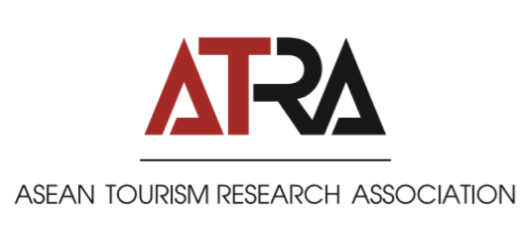BETAWI GEPLAK CAKE BECOMES A STRANGER IN ITS LAND
Abstract views: 453 | pdf downloads: 378
Abstract
Betawi is one of the ethnicities which exist in DKI Jakarta with its rich culture and foods. Among the variety of food on Betawi, there is Geplak cake as one of the traditional cakes of Betawi made from sangrai rice flour. From all cakes that represent DKI Jakarta, this cake is one of the least known cakes of other traditional Betawi cake. This research was designed to re-discover more about history, philosophy, and eating culture of Betawi Geplak cake as the way to make this cake known more to wider society and documenting the original method in making this cake. The descriptive qualitative approach used to analyze the data and information regarding Geplak cake. Sources for this research were Betawi cultural practitioner, existing Geplak cake makers, and sellers located in DKI Jakarta and respondents from age 18-39 years old. The results of this research were Geplak cake has existed since the 1900s. Geplak cake is not appeared by itself but because of several backgrounds such as the abundant ingredients in the ecosystem, creativity of the ancestors, and demand of the cake as part of a important ceremony. Geplak cake made from rice flour which also represents the prosperity and bridging hospitality among the Betawi people. Geplak cake is quite known among Betawi natives but not for other ethnicities live in DKI Jakarta moreover by the visitor who comes to Jakarta. Geplak cake appears in important events such as engagement, wedding, and Eid al-Fitr. In eating traditional cake like a Geplak cake, it is not the matter of eating this cake as it is just from the dimension of flavor but also from the history, philosophy, and cultural perspective. The food and its story become more valuable and can be an interesting tourism product as well. The term rarely found or nearly extinct must be seen through different perspectives because this cake still exists among Betawi Native especially elder people. A traditional cake like a Geplak cake needs to be preserved as a cultural asset of DKI Jakarta because its existence enriches the whole culture of DKI Jakarta.
References
/2020/06/21/220200875/ulang-tahun-jakarta-sudah-pernah-coba-12-makanan-betawi-
langka-ini?page=all.
Potoboda, Toshiko. (2019). Nostalgia dengan 7 Kue Manis Khas Jakarta yang Mulai Langka. Retrieved August 16, 2020 from Kumparan: https://kumparan.com/kumparanfood/
nostalgia-dengan-7-kue-manis-khas-jakarta-yang-mul
ai-langka-1qdVGiuRPf7
Purbasari, Mita. (2010). Indahnya Betawi. Humanoira, Volume. 1 Nomor. 1.
Rasmi, Lina Citra. (2017). Retrieved August 14, 2020 from Akurat: https://akurat.co/gayahidup/id-35472-
read-kue-geplak-khas-betawi-makin-langka-padahal-nikmat
Saputra, Andi Yahya. (2019). “Sejarah, Filosofi dan Budaya Makan Kue Geplak khas Betawi”. Personal Interview Result: 5 November 2019, Lembaga Kebudayaan Betawi Jakarta.
Sitawati, Annisa Diah. (2019). “Sejarah, Filosofi dan Budaya Makan Kue Geplak khas Betawi”. Personal Interview Result: 25 November 2019, Lembaga Kebudayaan Betawi Jakarta.
Sulaicha, Cucu. (2019). “Sejarah, Filosofi dan Budaya Makan Kue Geplak khas Betawi”. Personal Interview Result:: 12 November 2019, Lembaga Kebudayaan Betawi Jakarta.
Tauhid. (2014). Retrieved July 15, 2019 from Indonesia Kaya:
https://www.indonesiakaya.com/jelajah-Indonesia/detail/kue-geplak-kue-khas-betawi-ya
ng-mulai-langka-keberadaannya
Wijanarko, Tulus. (2018, 19 September). 5 Makanan Ini Ditetapkan Kemenpar
Sebagai Kuliner Nasional, Retrieved August 17, 2019 from https://travel.tempo.co/read/1128022/5-makanan-ini-ditetapkan-kemenpar-sebagai-kuliner-nasional/.























